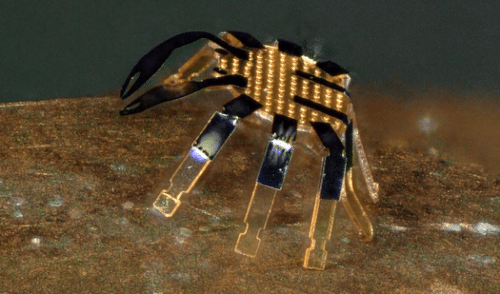Northwestern University engineers have unveiled the world’s tiniest remote-controlled walking robot – a tiny robotic crab!
The machine is only a half-millimeter broad and can fit on the edge of a penny with room to spare, according to the team’s new research published in May 2022, in the journal Science Robotics. In addition to robotic beetles, crickets, and inchworms, the researchers constructed a veritable swarm of other creature-inspired gadgets. The researchers believe their devices are a significant step toward developing practical robots that can execute remote-controlled operations in small settings.

Northwestern University)
“You might imagine micro-robots as agents to repair or assemble small structures or machines in industry or as surgical assistants to clear clogged arteries, to stop internal bleeding or to eliminate cancerous tumors—all in minimally invasive procedures,” John A. Rogers, professor of materials science and engineering at Northwestern University and lead author of the study said.
Electricity isn’t used to control the robot. It’s comprised of a shape-memory alloy, which allows it to change shape when heated before returning to its original shape when cooled. The team was able to heat specific portions of the robot using a laser beam, forcing it to “walk.” Moving the laser from left to right, for example, causes the robot to shift from right to left. “Because these structures are so tiny, the rate of cooling is very fast,” Rogers said. “In fact, reducing the sizes of these robots allows them to run faster.”
“With these assembly techniques and materials concepts, we can build walking robots with almost any sizes or 3D shapes,” Rogers said. “But the students felt inspired and amused by the sideways crawling motions of tiny crabs. It was a creative whim.”
The procedure allows the crabs to crawl, walk, and bounce around. Of course, because it requires a laser beam to move, it’s not quite ready for prime time. But it does pave the way for more advanced micro-robots in the future.
Click here to watch NU’s demo video on YouTube. Click here to read their study.













